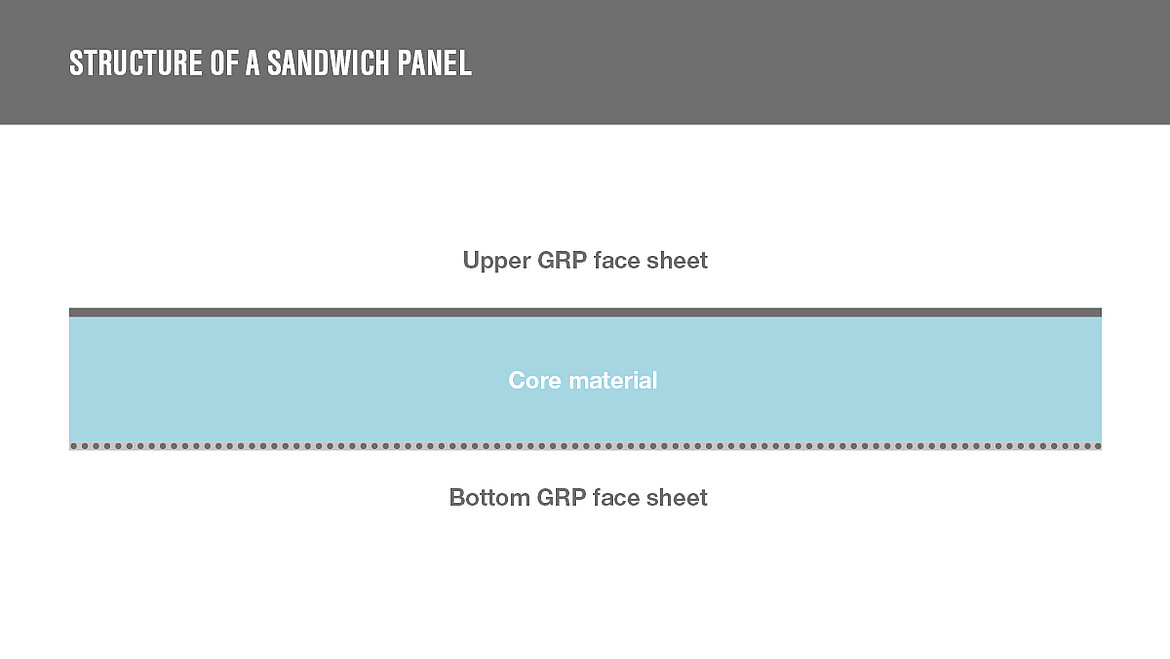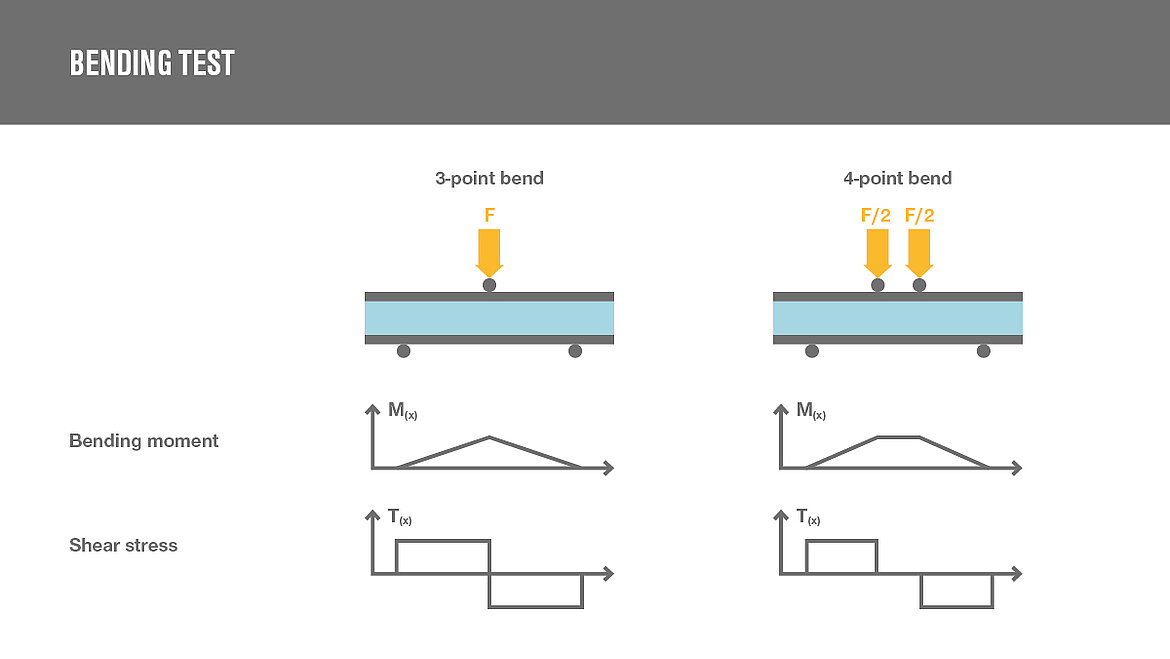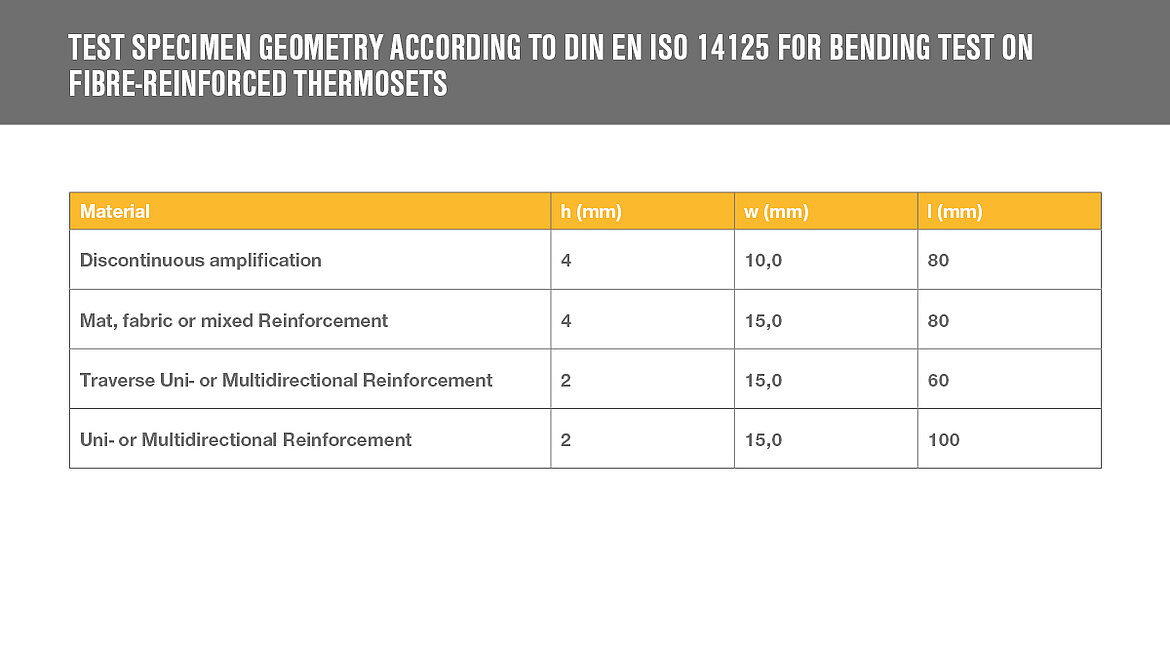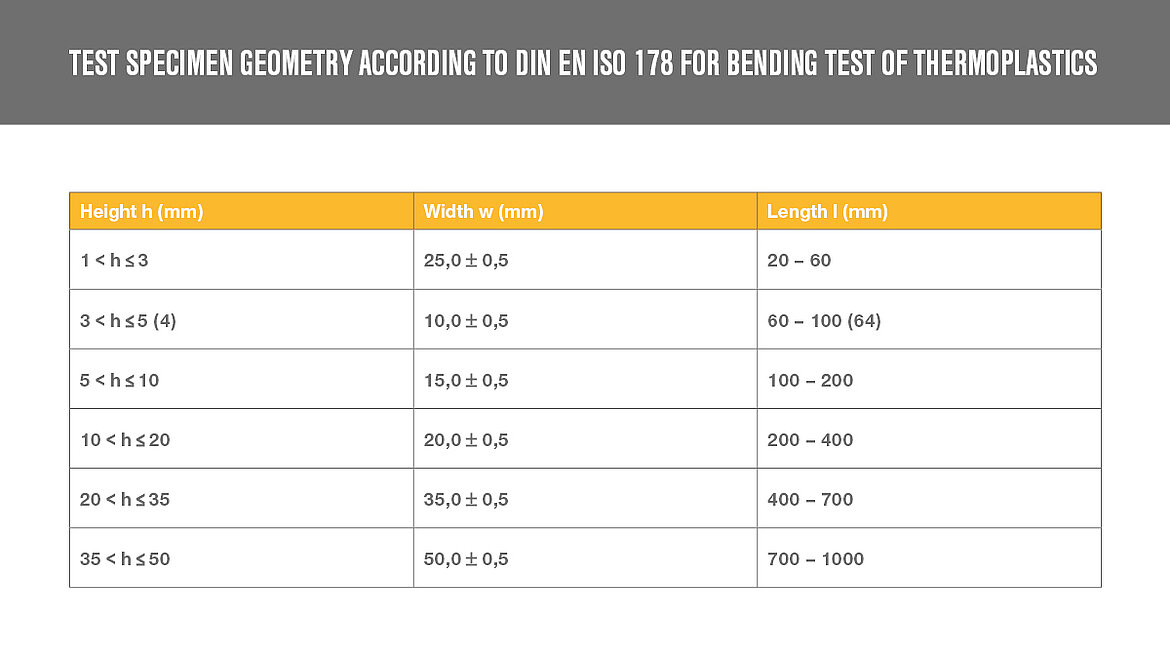GRP sandwich panels for individual use
House walls and roofs, ceilings, walls, doors and floor panels in vehicle construction, and even furniture today are made from sandwich panels. The individually designed sandwich panels have become an indispensable part of today’s life. If the decision is made to use fibre-reinforced plastics (GRP) for the top layers of the sandwich panels, the GRP sandwich panels become real all-rounders. With a relatively low weight, they can have considerable mechanical properties, such as high load-bearing capacity, excellent robustness and optimum thermal insulation.
Sandwich panels are generally made of a core material, such as foam, as well as top layers bonded on both sides. Both the core material and the top layers help to ensure mechanical strength. However, one thing must be observed here: the ratio of top layers to core material.
The core material must have such a high inherent rigidity and compressive strength that the distance between the top layers remains constant when the sandwich construction is bent. If this is not guaranteed, the bending strength of the sandwich panel immediately collapses.
Especially when used in vehicle construction, sandwich panels made of fibre-reinforced plastics must meet all quality parameters, in order to be able to offer the highest benefits in the industry for the material application. We will explain exactly which quality parameters these are later in this article.
Because not all plastics are the same. Mechanical, chemical, climatic and application technology tests therefore play an important role in design and quality assurance. This is because the quality of the products largely depends on how the materials were tested in advance for physical and mechanical properties. We will explain in detail which different quality guidelines and test procedures there are and how they guarantee the quality of sandwich panels.
TÜV test mark – the quality feature
In the best-case scenario, you can rely on the many years of experience and quality of GRP specialists for the sandwich panels you have selected – in particular, quality that has been tested externally. It is precisely this externally tested quality that makes the difference: Many companies promise the highest quality through their own laboratory and testing procedures, but do not have their own laboratory and testing procedures and therefore the quality of the products checked externally. The specialist for fibre-reinforced plastics, LAMILUX Composites, demonstrates how to do it correctly.
As the first manufacturer of fibre-reinforced plastic sheets and rolls, the family-run company LAMILUX Composites GmbH from Rehau has had its large number of laboratory and test facilities voluntarily certified by the TÜV Süd. The GRP specialist has therefore imposed the highest quality requirements on itself – for the highest quality of its products and excellent customer satisfaction in all areas of application. LAMILUX Composites supplies customers around the globe in the fields of vehicle, mobile home and caravan construction, cold storage and cold cell construction, container and construction industry and numerous other industrial segments. But how exactly can LAMILUX Composites guarantee the quality for these applications? LAMILUX Composites relies on its many years of experience and methodological knowledge in the fields of certification of laboratory and testing procedures of TÜV SÜD. The experts at TÜV SÜD combine different test methods specifically for the test criteria of the respective company, evaluate them professionally and present the test results.
TÜV SÜD is regarded worldwide as one of the leading independent bodies for product certification. TÜV SÜD tests and certifies a wide range of products in accordance with statutory standards as well as voluntary standards.
TÜV SÜD’s characteristic test mark, the blue octagon, has a very high recognition value and stands for quality and safety for professional buyers and consumers around the world.
But what exactly does TÜV certification actually do? TÜV SÜD certification provides effective proof that a product meets all relevant safety and quality requirements and has the required product features.
Especially through voluntary testing and certification, companies can differentiate their products from the competing products and emphasize that they only offer their customers and consumers high-quality, safe and stable products.
Check your desired product with the sandwich panel configurator
Depending on the application, requirement profile and purpose of use, sandwich panel manufacturers can create the right product for you. The selection of different material combinations in the field of fibre-reinforced plastics is enormous. The existing properties are just as versatile as the material selection. So, how practical would it be if you could have your individual sandwich panel tested in advance with the top layers you selected and the core material you selected? That’s exactly what you can do: In the best-case scenario, the manufacturers of GRP top layers offer to carry out and calculate individual sandwich simulations with the product you have configured. Where can you find such a helpful tool? For example, at the specialist for fibre-reinforced plastics, LAMILUX Composites. The so-called sandwich panel configurator carries out individual tests for sandwich panels with LAMILUX Composites top layers. The configurator is user-friendly and self-explanatory:
1. Choose the right GRP top layers for your test configuration.
2. Determine the core material and core thickness.
3. Select the type of test: 3-point bending test, 4-point bending test, compression die test
4. For comparison purposes, up to three superstructures can be combined into one request. Click “ADD NEXT TEST” if you want to add a new experimental procedure.
5. If you only want to carry out a simulation, click on “APPLY”.
6. As LAMILUX Composites carries out all requests individually, you will receive your results in the next few days after submitting your configuration request.
7. You can then make a preselection based on the orienting results. In addition to the simulated results, it is recommended to carry out laboratory tests on initial samples or to confirm suitability using a prototype.
Testing methods for highest quality
The LAMILUX Composites Sandwich Panel Configurator offers a selection of three tests: the 3-point bending test, the 4-point bending test and the compression die test.
Bending test refers to a method in which materials are examined for bending strength and other important properties. Destructive material testing is not only used for fibre-reinforced plastics and sandwich elements, but also for all other material classes.
The bending test works as follows: Standardized test specimens are placed in the centre of the test device. Rounded support rollers, also known as supports, are arranged parallel to each other at a certain distance, also called support width.
The test stamp, which moves down slowly and at a constant speed, loads the sample with increasing force until it fails or reaches a predetermined deflection. The maximum load exerted during the bending test is called the breaking force.
The different types of bending test differ in the number of pressure points and the storage of the test specimen:
3-point bending test
The 3-point bending test is the most frequently performed bending test. There are three pressure points in this test setup. Two supports and a centrally loaded test stamp. With lateral protrusions, the material to be tested lies transversely on the supports. If the 3-point bending test is shown graphically, a triangle results. The tip of this triangle corresponds to the upper, central pressure point. DIN EN ISO 178 prescribes the determination of the bending properties and determination of the elastic modulus of the 3-point and 4-point testing device. The methods according to DIN EN ISO 12 125 and DIN 53293 are also used for the bending test on fibre-reinforced plastics and sandwich panels.
4-point bending test
What is the difference between 3-point bending test and 4-point bending test? The only difference lies in the test device. Strictly speaking, the two differ only regarding the test stamp. The 3-point bending test uses a single compression die which exerts force in the centre, the 4-point bending test uses a double die instead. As a result, there is a constant bending moment in the area between the two upper pressure points and no transverse forces can occur. The graphical representation of the bending moment in the 4-point bending test shows a trapezoid.
But what’s important in the test? The 4-point bending test is carried out in accordance with DIN EN ISO 16841. The scope of this type of test includes the determination of the deformation behaviour of a test specimen under static bending stress. The effects of temperature, load time and other environmental conditions on the long-term behaviour of the tested plastic must be considered to be able to transfer the procedure to practice. In addition, the test speed of both standards must be adapted to the test specimen shape to avoid undue influences on the deformation and damage mechanisms that occur.
Compression die test
The last of the three tests that you can select for your individual test in the LAMILUX Composites Sandwich Panel Configurator is the compression die test. In this method, the GRP sandwich structure is placed in the testing device resting on four sides. The test stamp then exerts force on the centre of the sandwich panel with increasing intensity until it ultimately fails. The compression die test therefore examines the sandwich plate for how much force is required until destruction or what elastic resistance the sandwich plate opposes to the compression die and when the plastic deformation occurs.
Tests for perfection
But it is not just the 3-point bending test, the 4-point bending test or the compression die test that tests the quality of the sandwich panel. The possible tests that GRP sandwich panels put through their paces are almost endless: Infrared or halogen irradiation, condensation test, barcol hardness, torsion test, thermography test, thermal cycling test or impact test – to name just a few other examples. The professionals from the laboratory and technology departments of the GRP manufacturer LAMILUX Composites explain what is important for the individual tests:
Climatic Tests
"The GRP sandwich panels will later be primarily exposed to climatic influences, which is why my work focuses on simulating natural environmental influences as part of climatic tests. These include, for example, UV radiation, frost or temperature fluctuations. This ensures long-term durability in terms of colour and of surface and technical properties. - Lisa Degenkolb
Application-technology checks
"Application-specific support must also not be neglected, to make the composites safe and reliable for different applications. We continuously develop your individual materials and develop the right material solution for your needs under realistic conditions. - André Hollmann
Would you like to find out more about GRP sandwich panels?
Would you like to find out more details about the tests LAMILUX Composites performs to ensure the value retention and safety of your application? Then stop by the LAMILUX Academy. LAMILUX professionals will provide you with exciting insights through a wide variety of webinars. The LAMILUX Academy also focuses on maintaining the value and safety of GRP sandwich panels through TÜV-certified quality. Stop by right now and find the right webinar for you.







